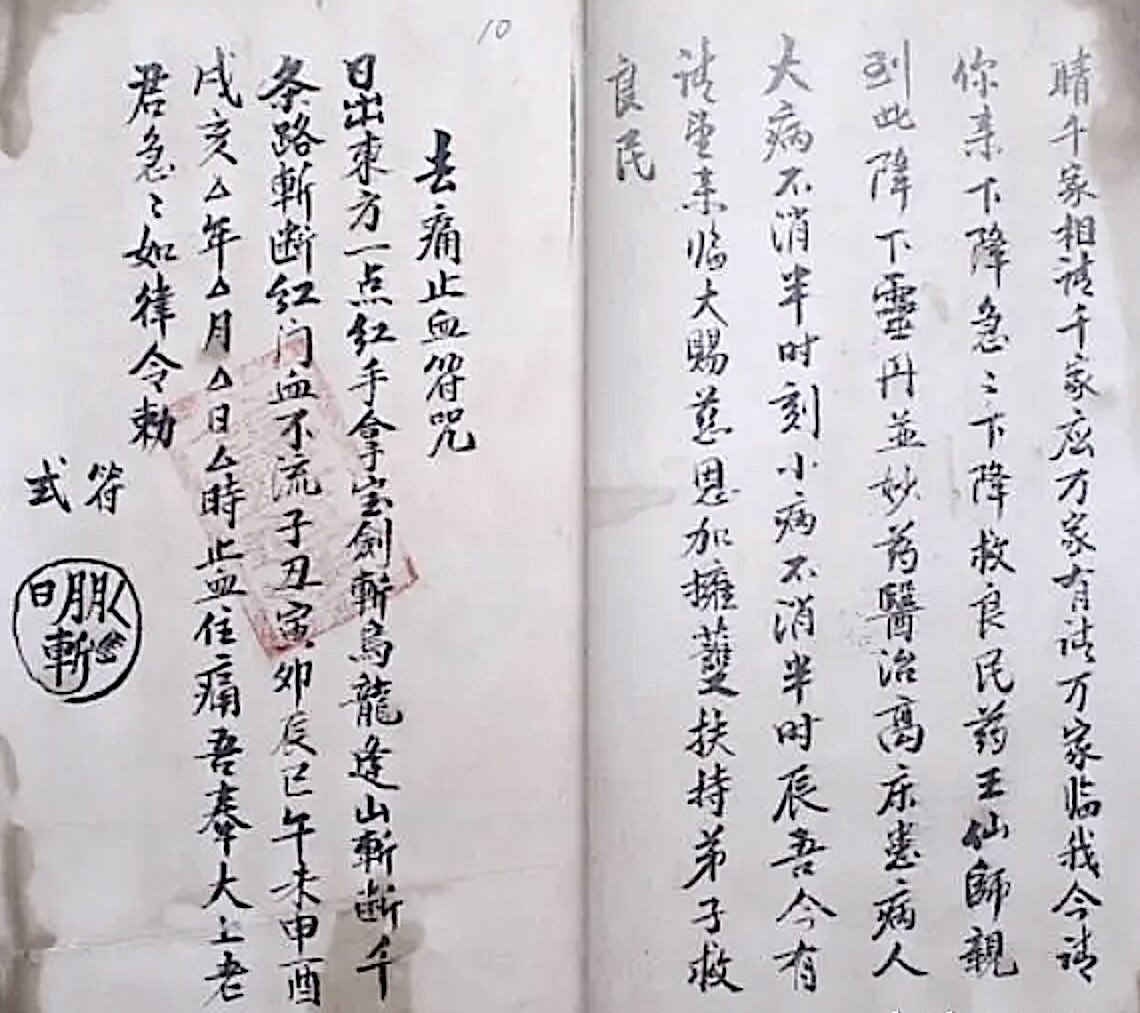
When we think of stealth operatives today, images of covert military operatives or the iconic black-clad ninja 忍者 often come to mind, their faces hidden behind dark masks, moving through the night with near-supernatural skill. However, historical evidence suggests that stealth was far more widespread and accessible than the narrow image we hold today. What is now seen as an elite or specialised skillset was, in ancient times, a more generalised and practical craft available to large segments of society, particularly in times of war and social instability.
The black clothes and masked faces so often associated with spies and assassins are actually rooted in the Taoist practices of yinshen shu 隱身術—literally, the ‘hide body skill.’ This system of concealment and deception was developed by early Taoists as part of a larger body of self-preservation techniques. Originally, yinshen shu 隱身術 was a means of achieving spiritual and physical harmony with the natural world, enabling practitioners to evade detection, whether from predatory animals or human enemies. Over time, these techniques were adapted to a variety of practical and martial applications.
The quintessential black night garb (夜行衣), often misattributed to specific stealth factions like the ninja 忍者 of Japan, actually has deeper roots in these ancient Taoist traditions. Night clothes 夜行衣 lit. ‘night walk clothes’, made from dark fabrics were worn not only to avoid detection but to symbolise a connection to the darkness, which Taoists believed held transformative power. This blending of the physical and spiritual worlds is a defining feature of yinshen shu 隱身術 and other Taoist arts. The ability to disappear or remain unseen was not just a matter of technique—it was an art form that aligned the practitioner with the natural forces of yin 陰, the passive and hidden aspect of the Tao 道.
As these skills became more sophisticated, a highly skilled group of operatives emerged—spies, assassins, and thieves, whose daring exploits became the stuff of legend. While yinshen shu 隱身術 was accessible to the general populace, especially in times of crisis such as the raids of Mongol invaders or the menace of bandit mobs, those who mastered the art could use it for far more calculated purposes. These operatives could steal into heavily guarded compounds, slip past battalions, and evade detection for days or even weeks. Their activities left a lasting impression on historical records and folklore.
Among the most skilled of these operatives were the tongshi 通士 lit. ‘penetrators’—the best of the best in the world of stealth. Tongshi 通士 were not just spies or assassins; they represented the pinnacle of stealth artistry. These highly trained individuals possessed the unique ability to ‘steal-in’ to seemingly impenetrable places—slipping through heavily fortified buildings, often entering through rooftops or other unconventional points of access. Once inside, they could remain undetected for extended periods, operating in hostile environments where the slightest mistake could mean death. Their roles were multifaceted: they acted as spies, assassins, saboteurs, and even agents of psychological warfare, using their presence or the threat of it to destabilise enemies.
What set tongshi 通士 apart from other stealth operatives was their extraordinary ability to navigate perilous situations with a mastery that few could rival. Their missions often required them to remain concealed within enemy structures for days, facing constant threats of discovery and death. This level of skill required not only physical prowess but psychological resilience, as tongshi 通士 had to be comfortable existing in a state of perpetual danger. They operated on the very edge of human capability, blending invisibility, deception, and sheer nerve.
Legends of shadowy figures who could disappear at will, assassins who struck under the cover of night, and thieves who left no trace of their presence all stem from the extraordinary capabilities of these operatives. While yinshen shu 隱身術 was a more ‘generalised skill’ used for self-preservation and survival, tongshi 通士 were the elite—those who had elevated the art of stealth to a near-mythic level, creating the archetype of the ghostly figure that could penetrate any barrier and leave enemies trembling in fear.
In conclusion, stealth skills, as they developed in ancient times, were far more widely practised and understood than our modern-day perceptions suggest. The black night walk clothes 夜行衣 and masks so emblematic of stealth culture have their roots in early Taoist practices, while the legends of operatives—spies, assassins, and thieves—represent the apex of these skills. Among these operatives, the tongshi 通士, or penetrators, were the most skilled and feared, using their unparalleled abilities to manipulate both physical spaces and the minds of their enemies. Stealth was not only a specialised military discipline—it was an essential part of survival and strategy, accessible in its basic form to anyone, though the greater art was mastered by only a select few.

A page taken from one of the last surviving books of Yin Shen Shu 隱身術. Personal collection
